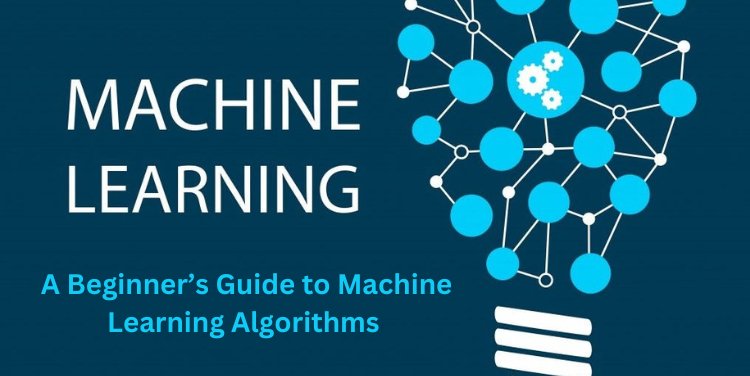A Beginner’s Guide to Machine Learning Algorithms

Machine Learning (ML) is a rapidly evolving field that leverages algorithms to enable systems to learn from data and improve their performance over time. For beginners venturing into the world of ML, understanding the fundamental algorithms is crucial. In this guide, we will explore some key machine learning algorithms, providing a foundation for those new to the field.
- Linear Regression:
Linear Regression is a fundamental algorithm used for predicting a continuous outcome based on one or more input features. It establishes a linear relationship between the independent and dependent variables. In simple terms, it finds the best-fit line through the data points, enabling predictions for new data.
- Logistic Regression:
Despite its name, Logistic Regression is employed for binary classification problems. It estimates the probability that an instance belongs to a particular class. By using a logistic function, this algorithm maps input features to a range between 0 and 1, making it suitable for classification tasks.
- Decision Trees:
Decision Trees are versatile algorithms used for both classification and regression tasks. These trees break down a dataset into smaller subsets based on feature conditions, eventually reaching leaf nodes with the final predictions. Decision Trees are advantageous for their interpretability and ease of visualization.
- Random Forest:
Random Forest is an ensemble learning technique that builds multiple decision trees and combines their outputs to improve overall performance and reduce overfitting. It enhances accuracy and generalization by aggregating predictions from diverse individual trees.
- Support Vector Machines (SVM):
SVM is a powerful algorithm for both classification and regression tasks. It works by finding the hyperplane that best separates data into different classes, maximizing the margin between classes. SVM is effective in high-dimensional spaces and is particularly useful for complex datasets.
- k-Nearest Neighbors (KNN):
KNN is a straightforward algorithm that classifies new instances based on the majority class of their k-nearest neighbors. The 'k' represents the number of neighbors considered. KNN is simple to understand and implement, making it a popular choice for beginners.
- Neural Networks:
Neural Networks, inspired by the structure of the human brain, consist of interconnected nodes organized into layers. Deep Learning, a subset of ML, employs neural networks with multiple hidden layers. Neural Networks are potent for complex tasks, such as image and speech recognition.
This beginner’s guide provides an overview of essential machine learning algorithms, laying the groundwork for further exploration in this dynamic field. Understanding these algorithms is key to solving real-world problems and building intelligent systems. As you delve deeper into machine learning, these foundational concepts will serve as a solid basis for more advanced techniques and applications.
What's Your Reaction?















